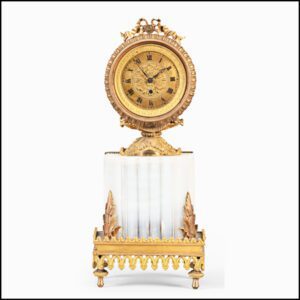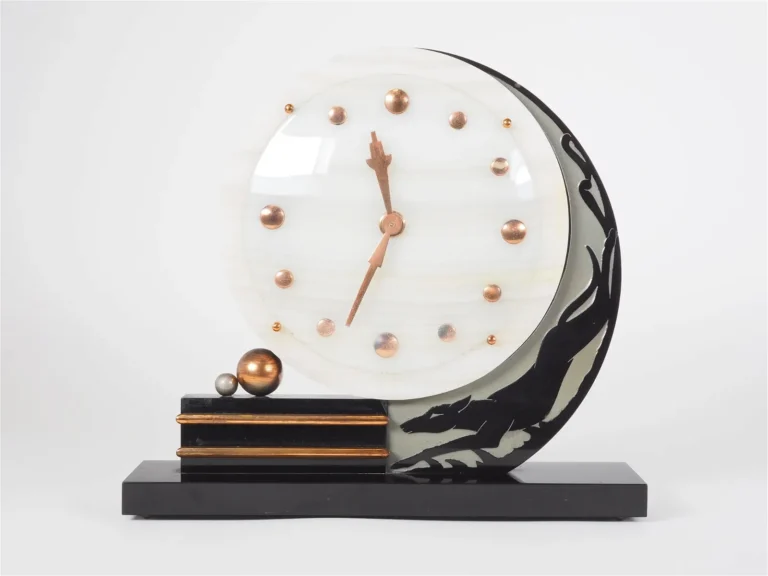Why Collectors Still Chase the Vintage French Clock
The vintage French clock stands as one of the finest examples of human ingenuity in both form and function. These aren’t just beautiful relics of the past—they’re living testaments to craftsmanship, inventiveness, and design that balanced precision with artistry. Each vintage French clock embodies the genius of its maker, blending mechanics and creativity in ways that still fascinate collectors and horologists today.
From the bustling clockmaking workshops of Paris to the ornate salons of Versailles, France set the standard for elegance in timekeeping. The country’s artisans didn’t merely build clocks; they engineered experiences—objects that brought movement, sound, and visual splendor together in perfect sync.
A Marriage of Art and Engineering
The inventiveness behind every vintage French clock lies in its remarkable attention to both mechanical perfection and visual design. French clockmakers were among the first to merge artistic sculpture with complex movements, creating clocks that were as much decorative as functional.
A fine vintage French clock might feature a gilt-bronze figure, hand-painted porcelain panels, or sculpted marble bases—all serving to elevate the precision mechanism within. Even an old vintage clock from a lesser-known maker displays the same commitment to detail. This harmony between mechanical ingenuity and aesthetic appeal is what continues to make French clocks so desirable centuries later.
Materials That Reflect Creativity

France’s reputation for design extended to its materials. Many vintage French clocks showcase ormolu (gilded bronze), enamel, or Sevres porcelain—a blend that signified wealth and sophistication. These were not mere timepieces but status symbols, designed to be admired as much as used.
Over the decades, each vintage French clock has taken on a character of its own. The soft patina of bronze, the delicate crackle in old enamel, or the gentle wear of marble all speak to its age and authenticity. Every old vintage clock tells a personal story through its surfaces—marks of both human touch and the passage of time.
Collecting the Vintage French Clock
Today’s collectors see more than beauty in these timepieces—they see the mark of genius. Owning a vintage French clock is like owning a small piece of invention. Each one, whether it’s a Louis XV-style mantel clock or a 19th-century carriage model, demonstrates how design and function can exist in perfect partnership.
Names like Japy Frères, Vincenti, and Raingo Frères still resonate in the collector world. Their craftsmanship produced some of the most rare antique clocks in existence—models prized not just for their age, but for their innovative features and enduring accuracy. When properly maintained, a vintage French clock can still run as smoothly as it did 150 years ago.
Maintenance: Preserving Genius
Caring for a vintage French clock is both a technical and artistic responsibility. Over-restoration can erase history, while neglect can lead to deterioration. Experts recommend cleaning only with gentle methods and preserving the original patina whenever possible.
A light polish on the ormolu, a careful cleaning of the dial, and regular servicing of the mechanism help retain both value and beauty. The goal is never to make an old vintage clock look new—it’s to keep its creative essence alive.
Why They Still Matter
The vintage French clock remains relevant because it represents something modern technology rarely delivers—emotion. The slow tick of a hand-wound clock, the subtle chime on the hour, the intricate gears working in harmony—all are reminders of the creativity behind early mechanical invention.
In a digital world obsessed with speed, a vintage French clock reminds us that function can also be beautiful. These are rare clocks that connect us to the origins of design thinking, where the boundaries between art and engineering blurred seamlessly.
A Timeless Investment
For investors and enthusiasts alike, acquiring a vintage French clock is a sound decision. Authentic examples with original movements and intact signatures continue to appreciate in value, especially those with elaborate ormolu work or royal provenance.
Collectors of rare antique clocks often describe the moment of discovery as magical—finding that one piece whose artistry and mechanics align perfectly. Whether displayed on a mantel or in a private collection, a vintage French clock becomes the centerpiece of any room, quietly commanding admiration.
A Legacy of Creative Function
What makes the vintage French clock so enduring is not just its beauty, but its inventiveness. Each one represents a balance of logic and artistry—a physical manifestation of the creative spirit that drove centuries of French craftsmanship.
Even now, their gears turn as they once did in the homes of nobles, scholars, and collectors. Their purpose hasn’t changed—to measure time, to enchant the eye, and to celebrate the fusion of invention and art. For those who appreciate fine design and functional beauty, few things rival the vintage French clock—an enduring symbol of France’s creative legacy and timeless function.


